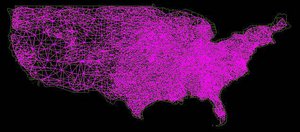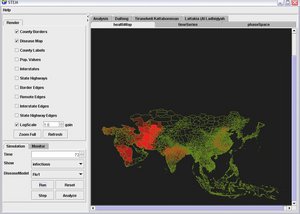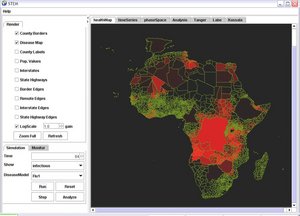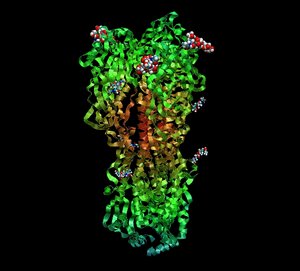Notice: this Wiki will be going read only early in 2024 and edits will no longer be possible. Please see: https://gitlab.eclipse.org/eclipsefdn/helpdesk/-/wikis/Wiki-shutdown-plan for the plan.
OHF STEM
STEM
The U.S. Map in STEM with Admin 2 resolution showing county adjacency and interstate highways
STEM I
The original version of STEM is available for downloadable IBM's Alphaworks. It contains easy to follow instructions and many examples (various diseases and maps of the world). You can download it and try it for free.
STEM 2
New developers who want to work on STEM II can fine useful tool, conventions, and design information in the Welcome Developers article.
The STEM II code repository is hosted on w3.opensource.ibm.com.
A recent publication on STEM: Ford, D.A., Kaufman, J.H., Eiron, I., "An extensible spatial and temporal epidemiological modeling system",
International Journal of Health Geographics 2006, 5:4 http://www.ij-healthgeographics.com/content/5/1/4 (17Jan2006)
What is the Spatiotemporal Epidemiological Modeler?
The Spatiotemporal Epidemiological Modeler (STEM) tool is designed to help scientists and public health officials create and use spatial and temporal models of emerging infectious diseases. These models could aid in understanding, and potentially preventing, the spread such diseases.
Policymakers responsible for creating strategies to contain diseases and prevent epidemics need an accurate understanding of disease dynamics and the likely outcomes of preventive actions. In an increasingly connected world with extremely efficient global transportation links, the vectors of infection can be quite complex. STEM facilitates the development of advanced mathematical models, the creation of flexible models involving multiple populations (species) and interactions between diseases, and a better understanding of epidemiology.
How does it work? The STEM application has built in Geographical Information System (GIS) data for every county in the United States. It comes with data about county borders, populations, shared borders (neighbors), interstate highways, state highways, and airports. This data comes from the public U.S. census TIGER files. Version 3.0 also contains many new maps of countries and regions around the globe.
STEM is designed to make it easy for developers and researchers to plug in their own models. It comes with spatiotemporal Susceptible/Infectious/Recovered (SIR) and Susceptible/Exposed/Infectious/Recovered (SEIR) models pre-coded with both deterministic and stochastic engines. Version 3.0 also supports multi-serotype disease models.
The parameters in any model are specified in XML configuration files. Users can easily change the weight or significance of various disease vectors (such as the weights of highways, shared borders, airports, etc). Users can also create their own unique vectors for disease. Version 3.0 includes public health policy events. Further details are available in the user manual and design documentation.
About the technology author(s):
- Daniel Ford, Ph.D., is the former manager of the Web Technologies Department at IBM Almaden and is currently on assignment at the IBM Watson Research Center in New York. He has a wide range of interests and research activities, including software engineering, bioinformatics, and robotics.
- James H. Kaufman, Ph.D., is manager of the Healthcare Informatics project in the Department of Computer Science at the IBM Almaden Research Center. He is also a fellow of the American Physical Society. During his career at IBM Research, Dr. Kaufman has made contributions to several fields, including simulation science and magnetic device technology. His scientific contributions include work on pattern formation, conducting polymers, superconductivity, experimental studies of the Moon Illusion, as well as contributions to distributed computing and grid middleware.
- John Thomas is a Java developer for IBM. He was previously one of the lead programmers for the IBM Almaden TSpaces project and also a member of the OptimalGrid Project at the Almaden Research Center. Mr. Thomas can be reached by e-mail (jthomas119 @ gmail.com)
- Iris Eiron joined IBM Israeli Research Lab in January 1998 and began working at IBM's Almaden Research Center in December 2000. Ms. Eiron's current interests include development and implementation of a national health care information infrastructure.





